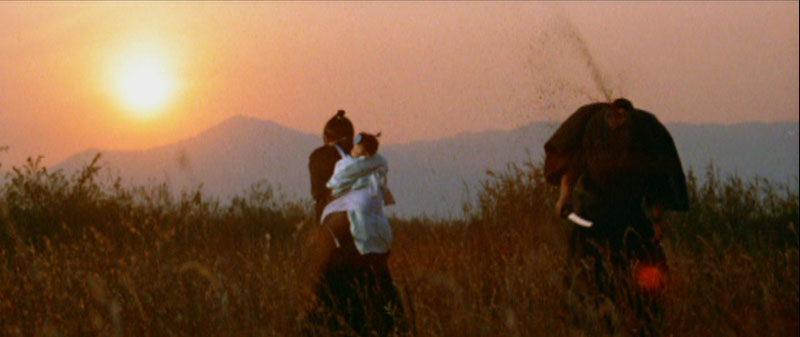
For many people of my generation Shogun Assassin (1980) was one of the first Japanese films that we ever saw. Out at the local video store Shogun Assassin awaited us with all of its beautifully staged action and surreal gore. The influence of Shogun Assassin proliferated through American Gen X culture, producing touchstone works such as Chris Claremont and Frank Miller’s Wolverine limited series, Ghost Dog: The Way Of The Samurai (1999), Kill Bill Vols. 1 & 2, and of course GZA’s Liquid Swords album. Shogun Assassin is, in many respects, more influential in Western culture than the original two Lone Wolf & Cub films from which it is cobbled together.
The man responsible for Shogun Assassin was none other than David Weisman. Weisman began as a designer working for Fellini who then segwayed into directing under the guidance of Paul Morrissey and Andy Warhol. After directing the cult film Ciao! Manhattan (1972) Weisman focused primarily on producing films. For very little money Weisman purchased the American rights to Kozure Ōkami: Kowokashi udekashi tsukamatsuru (1972) and Kozure Ōkami: Sanzu no kawa no ubaguruma (1972) with the intention of editing the films together into a kind of “super” action movie to be distributed by Roger Corman.
The resulting film retains only a few minutes of the first Lone Wolf & Cub film and the bulk of the second, but cut down so as to distill these films to their most essential and violent elements. This work and the english language dubbing was overseen by Robert Houston, an actor turned director best known for appearing in The Hills Have Eyes (1977). Houston’s edit of the films reveals his profound admiration for original director Kenji Misumi’s impeccably photographed and choreographed fight scenes. Misumi had been specializing in such action fare for years, having made a name for himself making Zatoichi pictures.
Shogun Assassin, aesthetically speaking, filters the influence of Sergio Leone back into the Japanese mold of the righteous Ronin after Leone had appropriated Akira Kurosawa’s Yojimbo (1961) for his own A Fist Full Of Dollars (1964). Shogun Assassin, under Houston’s direction, cuts out the carefully driven, character motivated pacing of the original films in much the same way that Leone condensed Kurosawa’s film into a violent extravaganza. Despite the ethereal nature of the violence that is distinctly Japanese in Shogun Assassin, the film exists as a wholly Western version of the material that conforms to a sort of comic book pacing which puts the spectacle of violence at the forefront of the cinematographic experience.
The Americanization of Lone Wolf & Cub is at its most obvious and profound on the soundtrack of Shogun Assassin. In addition to all of the dubbing, Houston and Weisman have completely changed the score of the film. The acid rock sounds of Eiken Sakurai have been replaced with a synth score by composer W. Michael Lewis and ex-front man for Paul Revere & The Raiders Mark Lindsay. The synth score is the driving force of the film and has gone on to be sampled quite frequently by other musical artists.
Ultimately Houston and Weisman created an entirely unique film experience in Shogun Assassin that is unique to its source materials. Although many prefer the nuances and tone of the original Japanese films, there is no denying that for an unadulterated adrenaline rush it is hard to top Shogun Assassin. There is nothing typical about Shogun Assassin in terms of its editing and dubbing. It is not a hack job on some low budget kung-fu movie by some grubby little home video distributor. Shogun Assassin is its own work of cinematic art and must be seen as such.
